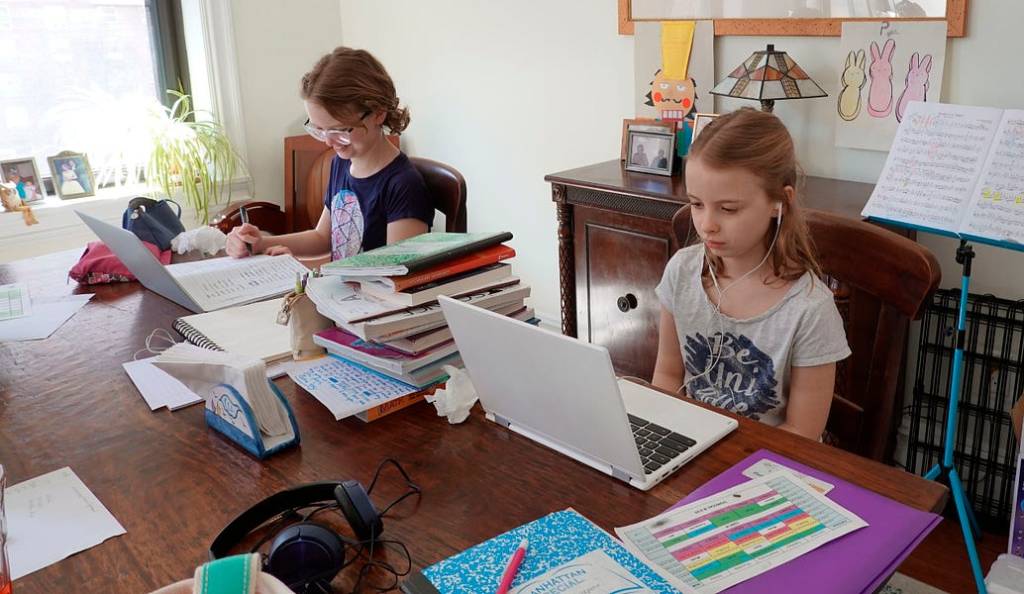The ongoing spike in COVID-19 cases nationwide is happening at precisely the same time schools are trying to figure out how best to handle learning in the fall, and many districts are taking precautionary measures. The Houston Independent School District is starting the school year with six weeks of online schooling, lasting until mid-October. Atlanta is starting the year with nine weeks of online learning. Los Angeles students will be online for a yet-to-be determined amount of time at the start of the year. Just last week, Montgomery County, Maryland, announced that the entire fall semester would be online.
Other school districts are planning parallel online and in-person tracks, allowing students who wish to work from home to do so while other students attend class at least part-time.
This is a train wreck waiting to happen. As my friends Rick Hess and Nat Malkus pointed out in The Dispatch back in June, starting a school year remotely is different from transitioning to online learning after the school year has begun. Last year, teachers and students had months to develop relationships and rapport, so when they moved online, they had a strong foundation for the new medium. This fall, millions of students will have new teachers and new classmates. The foundation will be sand.
Having parallel online and in-person instruction is going to be tough to pull off. If teachers are expected to develop great lessons and monitor students both inside the classroom and working at home, it is going to be a huge amount of labor. If their own children are at home as well, it will be next to impossible.
Further, there are obvious questions in districts that offer some form of in-person learning as to what happens if case growth stays steady or local hotspots break out. What happens if a student or teacher is infected or a flareup happens in their community? They need to be ready to pivot from in-person to online learning overnight.
OK, that’s the doom and gloom. What if I told you that schools could provide coherent, continuous education without overwhelming teachers? It’s absolutely possible.
As it turns out, there are dozens of online learning curricula that already exist, ready to roll right now. Edementum provides online courses and assessments aligned to state standards. It is plug and play. FuelEd has more than 500 courses. Odysseyware has hundreds of courses too. The list goes on. These are not just elective classes either, they offer core academic classes for students at every grade level.
Districts have used these courses in the past for credit recovery, to offer classes that they might not have the staff to teach, for medically fragile students who need to work from home, and for a host of other reasons. Almost every state in the union, pre-coronavirus, already offered some form of online learning, whether through options provided by school districts or through online charter schools.
A school or school district would simply have to contract with these providers to access the courses for their students. Then students would work through their online coursework, mastering the necessary material on the provider’s platform, at home when necessary and at school when possible.
Given the fact that state and district budgets are already going to be stretched, these platforms have the advantage of being low cost. A license that covers all subjects for Study Island, one of the platforms offered by Edmentum, only costs $180 per student per year, a price point that could probably be negotiated down when purchased in bulk.
A system with an online learning platform as the backbone would be much more resilient to viral flareups. If a school has to close for a week, no big deal, students just work on their work from home. If the virus is at a low level, awesome, get everyone in the building working through their classwork in person.
Now there are issues around devices and internet access to be sure. In many districts, it would take time and money to get students the hardware that they need to make this work. But, freed from the worries about developing quality online learning on the fly, teachers and administrators can focus on getting students Chromebooks and internet connections. (Not to mention that these are problems districts are already going to face if they plan weeks of online learning at a time.)
So, now the $64,000 question: Can this work? Well, this is how the Epic charter schools in Oklahoma already operate for more than 30,000 students. Some of their students work online full-time while others come to in-person “blended learning centers” for a more traditional school environment. Whatever track students are in, they work away on self-paced online curriculum. Some just happen to do it at home while others do it in a school building. Others bounce back and forth. Seems like a pretty good proof of concept.
Julie Bohanon, whose son attends an Epic school in Tulsa, spoke about his experience at a blended learning center, saying, “He would go in and do the work that was assigned to him, he could get on the computer and do it. So he could get all of that stuff done at home, but he got the added benefit of being in the classroom with a teacher. And his teacher was just amazing. She’s extremely smart, extremely caring, and she works hard with every student.”
This, rather than uncertainty, confusion, and frustration, could be the experience for children this year.
There will be a time in the future when schools can return to their normal rhythms and practices. But at least for this year, school leaders need to be realistic about what they are able to accomplish against the backdrop of an uncontrolled pandemic. Humility is key. Hand over instruction to platforms that are robust whether students are in the classroom or online and focus teachers’ energy on making sure that students are safe, feel part of a community, and are developing the social and emotional skills that they learn at school.
This will make teachers’ lives easier. It will ensure continuity of instruction. And, it will give parents an insurance policy that their child will keep learning even if school has to temporarily close.
Photograph by Peter Titmuss/Education Images/Universal Images Group/Getty Images.




Please note that we at The Dispatch hold ourselves, our work, and our commenters to a higher standard than other places on the internet. We welcome comments that foster genuine debate or discussion—including comments critical of us or our work—but responses that include ad hominem attacks on fellow Dispatch members or are intended to stoke fear and anger may be moderated.
With your membership, you only have the ability to comment on The Morning Dispatch articles. Consider upgrading to join the conversation everywhere.